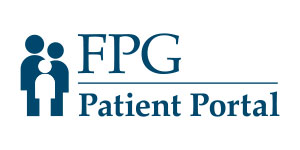By FPG Pediatrician Deirdra Myers, MD
Viral respiratory infections are on the rise across the U.S., according to the Centers for Disease Prevention and Control (CDC). And in our own community, we’ve seen an uptick in cases of Respiratory Syncytial Virus (RSV) at our First Physicians Group (FPG) practices.
A very common respiratory virus, RSV causes mild, cold-like symptoms in most people. But for infants and young children, RSV can be much more dangerous. An estimated 58,000 children under age 5 are hospitalized due to RSV infection each year, according to the CDC.
Who’s at Risk?
Very young or premature infants, children with chronic lung disease or congenital heart disease, children with weakened immune systems, and children who have neuromuscular disorders are all at high risk for severe illness from RSV.
Symptoms to Watch For
Symptoms of RSV usually include common cold symptoms such as nasal congestion, a mild cough, fever, and decreased appetite. For infants younger than 6 months, other symptoms such as irritability, poor feeding, decreased activity, and breathing difficulties may appear. Older infants and young children may experience sneezing, fever, and wheezing, which can last for several days.
Serious cases of RSV can develop into bronchiolitis in infants and young children. Bronchiolitis inflammation can block smaller airways in the lungs, causing a whistling sound when children breathe. This can dramatically decrease oxygen entering the lungs and cause respiratory distress.
Signs of severe bronchiolitis include chest wall retractions, nasal flaring, and grunting. Blue-tinged skin, known as cyanosis, can develop as the illness progresses. Apnea, a pause in breathing for more than 15 to 20 seconds, can be the first sign of RSV bronchiolitis in some infants, especially premature infants or full-term infants younger than two months old. Any of these symptoms require emergency evaluation. Severe cases may require hospitalization and oxygen support.
If your infant or child who has RSV is well enough to be cared for at home, it is important to closely watch them for signs or symptoms of worsening condition. If you notice serious symptoms such as heavy breathing, chest wall retractions, nasal flaring, blue-tinged skin, decreased ability to feed, or decreased urine output, seek medical care immediately.
Treating Mild RSV at Home
Treatment for RSV involves managing symptoms, such as using over-the-counter fever reducers, and ensuring your child is drinking enough fluids to avoid dehydration. Most children begin to improve in two to five days after first developing breathing difficulties, but wheezing can last for a week or longer.
RSV spreads when infected people cough or sneeze, spreading virus droplets to others. RSV can infect someone when they touch a surface that has the virus on it, and then touch their face before washing their hands. People infected with RSV are contagious for 3 to 8 days, but some people with weakened immune systems can continue to spread the virus for up to 4 weeks.
Preventing RSV Infection in Children
To protect your children and prevent the spread of RSV, you should:
- Wash your hands frequently with soap and water, especially before touching an infant.
- Use hand sanitizer as an alternative if you cannot wash your hands with soap and water.
- Avoid close contact with anyone who is sick, adult or child
- Cover your coughs and sneezes.
- Clean and disinfect frequently touched surfaces.
Board-certified pediatrician Deirdra Myers, MD serves patients and families at the First Physicians Group Pediatrics office in Lakewood Ranch. Dr. Myers is currently accepting new patients. Please call 941-366-3000 for more information.



